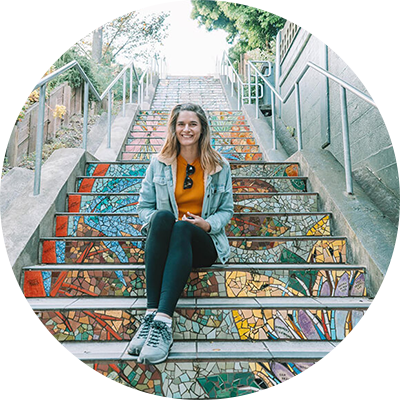A summary of the best Sequoia National Park camping spots. Plus, everything you should know before camping in this beautiful national park.
Sequoia National Park is unlike any other place in the world.
The Giant Forest is very famous, of course, but there are also hundreds of thousands of acres of sheer wilderness with gorgeous subalpine and alpine meadows and lakes to discover.
Unfortunately, the KNP Complex Fire in 2021 devastated some major areas of the park, and as a result, some operations (campgrounds and some services) have changed.
This detailed camping guide gives you everything you need to know about those changes and where to camp in this beautiful park in 2022 and beyond.
These are the best Sequoia National Park camping spots, plus some of the best campgrounds outside the park if you can’t snag a reservation in time.
Note: this post contains affiliate links, which help run this site at no extra cost to you so I can keep providing free travel advice and tips.
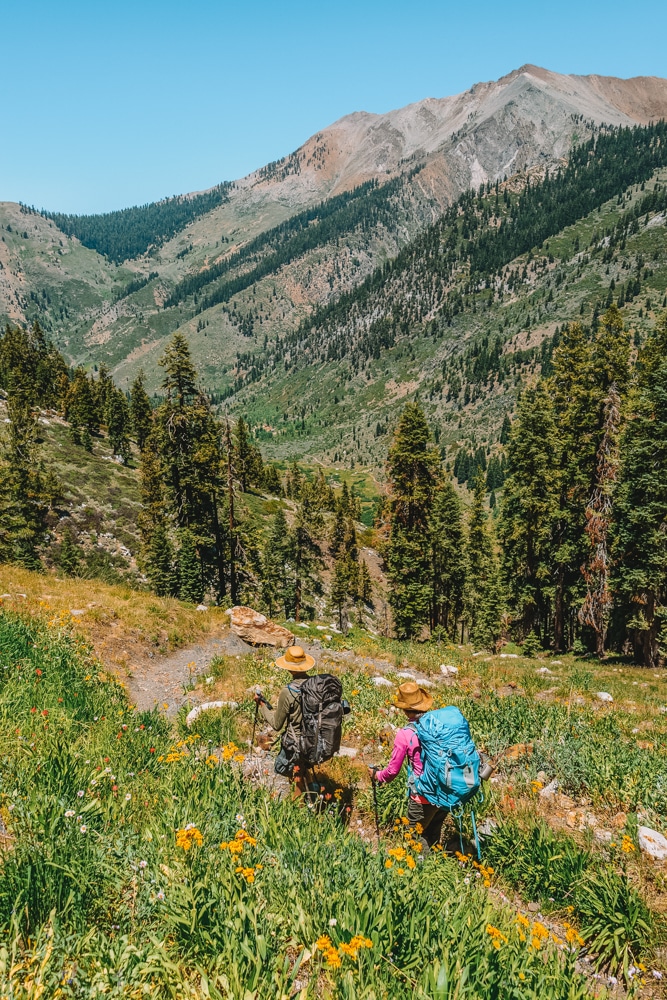
A Quick Glance at Sequoia National Park Campgrounds
| Campground | Location | Sites | Toilets | Group | RV |
|---|---|---|---|---|---|
| Lodgepole | Lodgepole | 214 | Flush | No | No |
| Cold Springs | Mineral King | 40 | Vault | No | Yes, dump station |
| Atwell Mill | Mineral King | 21 | Vault | No | No |
| Buckeye Flat | Foothills | 27 | Flush | No | No |
| Potwisha | Foothills | 42 | Flush | No | Yes, dump station |
| South Fork | Foothills | 10 | Vault | No | No |
| Dorst Creek* | Lodgepole | 222 | Flush | Yes | Yes |
America the Beautiful Pass
If you’re planning to visit more than 2-3 big national parks in a year, you should consider getting the America the Beautiful Pass.
This pass is sold at REI, costs $80, and will get you into all of the National Park Service sites.
You can also buy the America the Beautiful Pass at any park entrance station that collects fees or online here. The National Park Service sells discounted passes for seniors and veterans.
Get your FREE California Travel Planner – including printable checklists and my favorite two-week itinerary for the state.
Making Reservations for Sequoia National Park
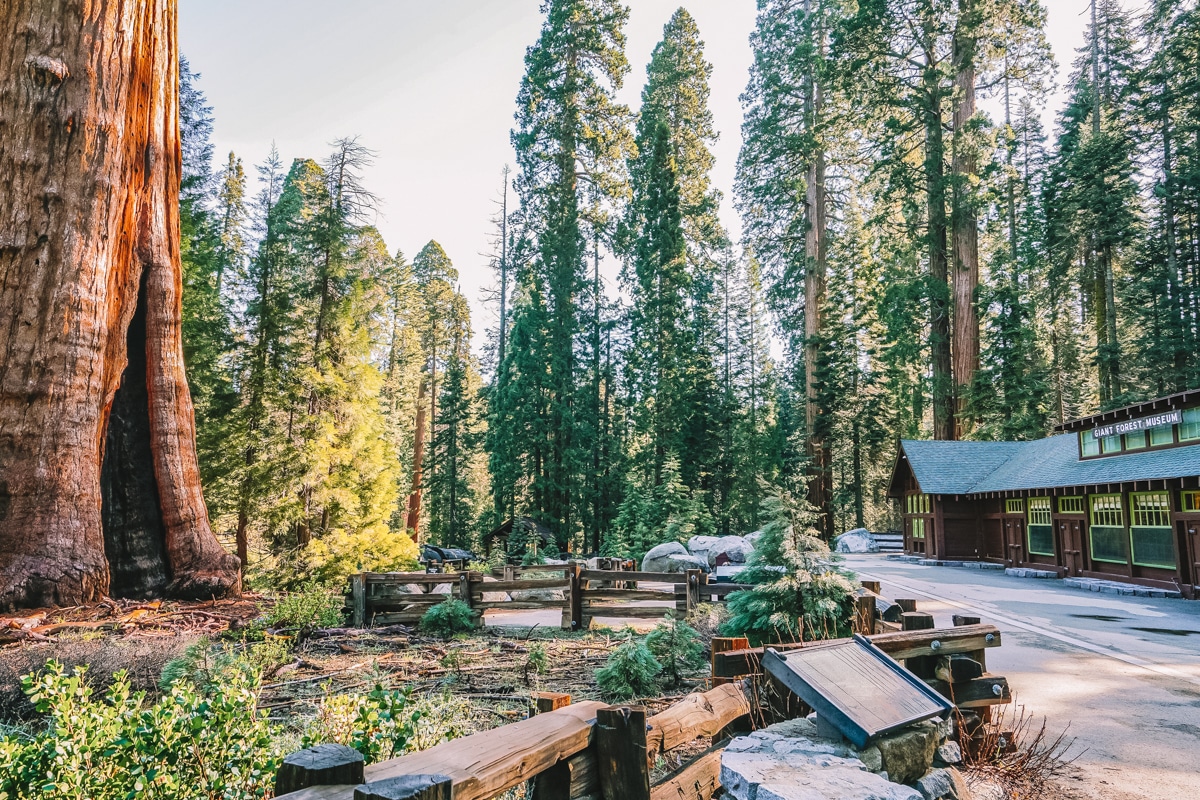
As national parks grow in popularity, more and more national parks are using an online reservation system for their campgrounds.
All national park campsites that require a reservation can be booked on recreation.gov.
To make reservations in one of the park campgrounds:
- Create a profile on recreation.gov.
- Search for campgrounds in your desired national park.
- Input your dates to see if there’s any availability.
When you search for campgrounds in Sequoia, you’ll see them listed as “Sequoia-Kings Canyon,” because Sequoia and Kings Canyon are jointly administered.
However, there’s an important distinction between the campgrounds. Sequoia campgrounds can be booked up to six months in advance whereas many of the Kings Canyon campgrounds are only available one month in advance.
All Sequoia-Kings Canyon campgrounds open at 7 am Pacific Standard Time. Be logged on a few minutes ahead of time with the campsite you want in your cart by 7 am to give yourself the best chance of getting a site.
It’s also a good idea to book as far in advance as possible, even up to the full six months, especially for summer camping.
Places to Camp in Sequoia National Park
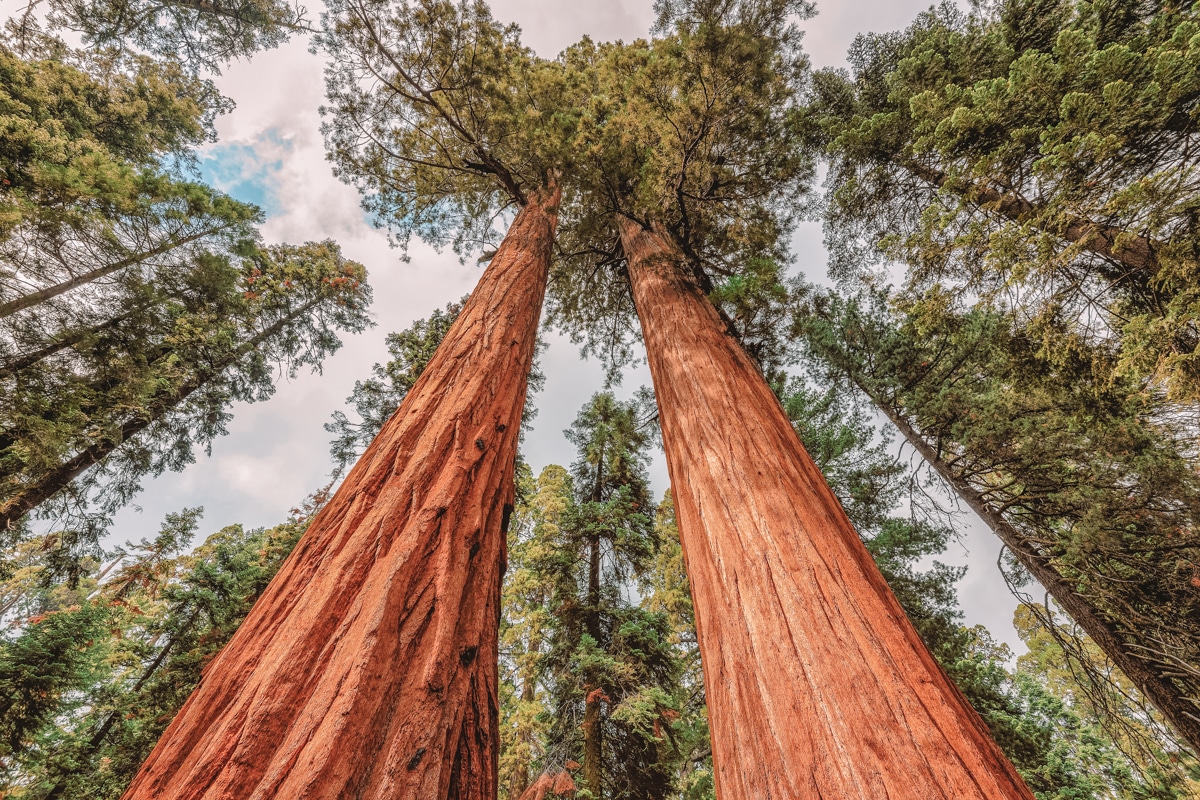
Most large national parks are divided into districts and Sequoia National Park is no different. There are three districts in this park, each one with unique attributes that make it attractive.
Regardless of where you stay, most campgrounds have a fee. In Sequoia, the average cost for a campground is around $22 per night for a single site.
Lodgepole District
The Lodgepole District is the most popular part of the park and includes two campgrounds: Dorst Creek Campground (closed in 2022) and Lodgepole Campground.
This area of the park is close to Lodgepole Village, which includes a grocery market, grill, souvenir shop, ATM, showers, laundry mat, and a pay phone.
Lodgepole District is about as deep into the park as you can get by driving.
Foothills District
The Foothills District of the park is the lower elevation section you’ll pass through if you take Highway 198 through Three Rivers to get into the park.
Because this section is lower in elevation, it’s warmer here and the campgrounds are open longer than the ones in the Lodgepole District.
The campgrounds in the Foothills District include Buckeye Flat Campground, Potwisha Campground, and South Fork Campground.
Mineral King District
The Mineral King area of the park is one of the least visited but also one of the most beautiful.
Mineral King is a sub-alpine valley, the elevation of which is about 7,500 feet (which can be enough to give some people altitude sickness).
There are two campgrounds in Mineral King: Cold Springs Campground and Atwell Mill Campground.
The park roads leading into Mineral King are unpaved and RVs/trailers should not attempt these roads.
Best Campgrounds in Sequoia National Park
Below, I’ve listed all seven of the Sequoia National Park campgrounds in order of best to “very good,” (because I don’t believe there’s a “worst” campground here, ha).
Note that all the campgrounds in Sequoia have bear-proof food storage boxes, which I simply call “bear boxes.”
Lodgepole Campground
Why it’s worth camping at: It’s close to lots of amenities and popular attractions like giant sequoia groves.
Location: Lodgepole
Open: Late April to Late November
Number of sites: 214 (76 tent sites, 16 walk-in sites, 2 wheelchair-accessible sites)
Cost: $22.00
Reservations allowed: Yes, click here to reserve.
Amenities: Paved roads, flush toilets, drinking water, picnic tables, bear boxes, and fire rings. Showers are available in nearby Lodgepole Village.
Campground map
The Lodgepole Campground is the most popular campground located near Lodgepole Village, Giant Forest Grove, and the General Sherman Tree.
There are lots of popular nearby trails including the Lakes Trail and the Twin Lakes Trail. This campground is also located on the Marble Fork of the Kaweah River, which is a nice place to dip your toes in summer.
There are no RV sites at Lodgepole Campground but there are two accessible sites as well as 16 walk-in sites (which means you can’t park your car directly at the site).
This campground is located at 6,700 feet, which is decently high. While the summer days are warm, it cools off quickly at night, so bring plenty of layers.
Cold Springs Campground
Why it’s worth camping at: You get to camp in the high country without backpacking.
Location: Mineral King
Open: Late May to early October
Number of sites: 40 (31 regular sites, 9 walk-in tent sites)
Cost: $22
Reservations allowed: Yes, click here to reserve.
Amenities: Drinking water, RV dump station, picnic table, fire ring, vault toilets, bear boxes, and a pay phone. No showers.
Campground map
Camping at high elevations is unique because there aren’t many alpine ecosystems in the Lower 48.
High elevation ecosystems are cold and uninhabitable for humans most of the year, so operating campgrounds at high elevations is also tricky. This is why the Cold Springs Campground is so unique!
The Cold Springs Campground is a remote campground at the end of Mineral King Road. The amenities are a bit limited, but it has drinking water and pit toilets.
There are no RV sites here, rather, they have a handful of walk-in tent sites that are 100-200 yards from the parking area.
There are several hiking trails near Cold Springs Campground, including the Tar Gap Trail and Cold Springs Nature Trail.
Just note that bigger park attractions like the Giant Forest and General Sherman Tree are a solid 1.5 hours away.
Atwell Mill Campground
Why it’s worth camping at: You get the privacy of the Mineral King district with less driving!
Location: Mineral King
Open: Late May to early October
Number of sites: 21 (tent only)
Cost: $22
Reservations allowed: Yes, click here to reserve.
Amenities: Vault toilets, picnic table, fire ring, bear boxes, and drinking water. No showers.
Campground map
The Atwell Mill Campground is also located in the Mineral King area but it isn’t at the end of Mineral King Road the way Cold Springs Campground is.
Make no mistake, this is still considered a remote campground, but it’s a little closer to the nearby towns.
This is a high-elevation campground (7,500 feet) that’s located along the East Fork of the Kaweah River. This small campground is by reservation only and is the starting place for the Atwell-Hockett Trail.
From Atwell Mill Campground, the Giant Forest is still about an hour and a half away.
Buckeye Flat Campground
Why it’s worth camping at: Listen to the sounds of Kaweah River while you camp.
Location: Foothills
Open: March to late September
Number of sites: 27 sites (tent-only sites)
Cost: $22
Reservations allowed: Yes, click here to reserve.
Amenities: Drinking water, picnic table, fire ring, bear boxes, and flush toilets. No showers.
Campground map
The Buckeye Flat Campground is a few miles past the Potwisha Campground on the General’s Highway. It’s a low-elevation campground, nestled among oak trees and buckeye tree groves.
This small-ish campground is also located along the Kaweah River and most of the sites are within striking distance of the river.
Fire restrictions are often in place at Buckeye Flat Campground, even in early summer. There are no RV sites or group sites here–just tent sites.
The Paradise Creek Trail is nearby and this is a really popular hike.
Potwisha Campground
Why it’s worth camping at: It’s one of the few campgrounds open year-round.
Location: Foothills
Open: Year-round
Number of sites: 42 (2 accessible sites)
Cost: $22
Reservations allowed: Yes, click here to reserve.
Amenities: Drinking water, RV dump station, picnic table, fire ring, bear boxes, and flush toilets. No showers.
Campground map
The Potwisha Campground is one of the few campgrounds in Sequoia National Park that is open year-round.
This campground is in the Foothills District of the park, close to the Ash Mountain Entrance (which is the southern entrance near Three Rivers).
Potwisha Campground is situated on a fork of the Kaweah River and surrounded by oak trees. It’s just a few miles past the Foothills Visitor Center. Due to its low elevation, this campground is quite hot and fire restrictions are common here.
Unfortunately, the popular Marble Falls Trail near the campground is closed in 2022 due to damage from the KNP Complex Fire.
There are RV sites here but it’s not recommended to take RVs longer than 24 feet.
South Fork Campground
Why it’s worth camping at: It provides for a quiet, wilderness experience.
Location: Foothills
Open: Year-round
Number of sites: 10
Cost: $6
Reservations allowed: No, first-come, first-served only.
Amenities: Vault toilets, picnic table, fire ring, and bear boxes, but no running water.
Campground map
First-come, first-served camping at Sequoia National Park is rare for front-country campgrounds, but South Fork Campground still permits this type of camping.
The South Fork Campground is so named because it sits on the South Fork of the Kaweah River. This is a 10-site campground that’s typically open year-round.
The South Fork Campground is quite remote–it’s an hour’s drive from most of the popular attractions in the park. To get to this campground, you take South Fork Drive, which turns off Highway 198 after Three Rivers, CA.
This is a low-elevation campground situated at the boundary between oak trees and evergreen trees. Fire restrictions are common here, even in early summer.
Dorst Creek Campground [Closed in 2022]
Why it’s worth camping at: It’s another centrally located campground close to lots of hiking trails.
Location: Lodgepole
Open: June to early September
Number of sites: 222 (33 RV-only sites, 12 tent-only sites, 4 group sites)
Cost: $22 (when open)
Reservations allowed: Yes, click here to reserve.
Amenities: Flush toilets, drinking water, picnic tables, fire rings, and bear boxes. Showers are available at Lodgepole Village.
Campground map
Dorst Creek Campground is another big, popular campground due to its central location.
This campground is closer to the northern entrance to Sequoia National Park, which also means it’s slightly closer to Kings Canyon National Park as well.
Unfortunately, Dorst Creek Campground is closed in 2022 as a result of the KNP Complex Fire in 2021.
Keep your eyes peeled for its reopening, however, because this is normally a great campground!
This campground is situated at 6,800 feet of elevation, which I would consider moderately high. You’ll want to bring layers for night time, even in summer.
This campground has a shuttle that takes visitors to the Giant Forest of giant sequoias and Lodgepole Village. It also has lots of popular trails nearby, including the trail to the Muir Grove of giant sequoias.
Best Backcountry Campgrounds in Sequoia National Park
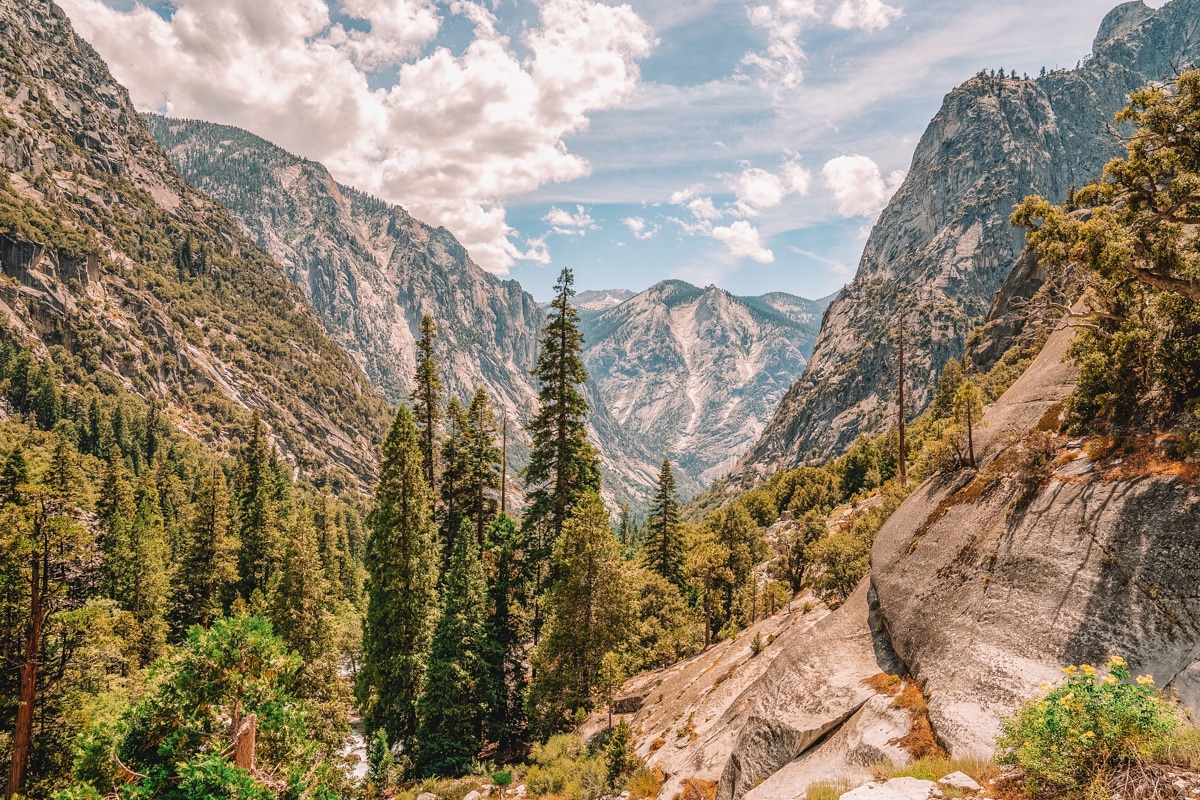
Sequoia National Park does backcountry permits similarly to Yosemite National Park.
They don’t really have designated backcountry campsites; rather, you pick a trailhead and then you camp somewhere along the trail in more of a “dispersed” style of camping.
However, unlike true dispersed camping, you’ll need a permit to camp in the backcountry.
Sadly, the KNP Complex Fire closed many popular overnight backcountry locations. Click here to see the most up-to-date closure map.
These are some of the popular backpacking trips in Sequoia National Park.
Lakes Trail to Pear Lake
The Lakes Trail to Pear Lake is a popular, short trail (12.4 miles) with about 3,500 feet of elevation gain.
It’s great for new backpackers because it has a pit toilet and even bear food storage boxes at several of the popular camping stops. This trail starts from the Wolverton Parking Lot.
High Sierra Trail
The High Sierra Trail is a very challenging six to eight-day backpacking trek that ends on Mt. Whitney, which is the tallest peak in the Lower 48. The trail is 73 miles in total with over 15,000 feet of elevation gain.
This trail starts at the Crescent Meadow Trailhead on the west side of the Sierra Nevada and ends on the east end, so be sure to plan your ride back!
Rae Lakes Loop
Rae Lakes Loop is another very popular backpacking route in Sequoia. It’s 37.5 miles roundtrip with 7,800 feet of elevation gain. Most people take 4-5 days to complete this trail. It starts at the Roads End Trailhead.
Free Camping in Sequoia National Park
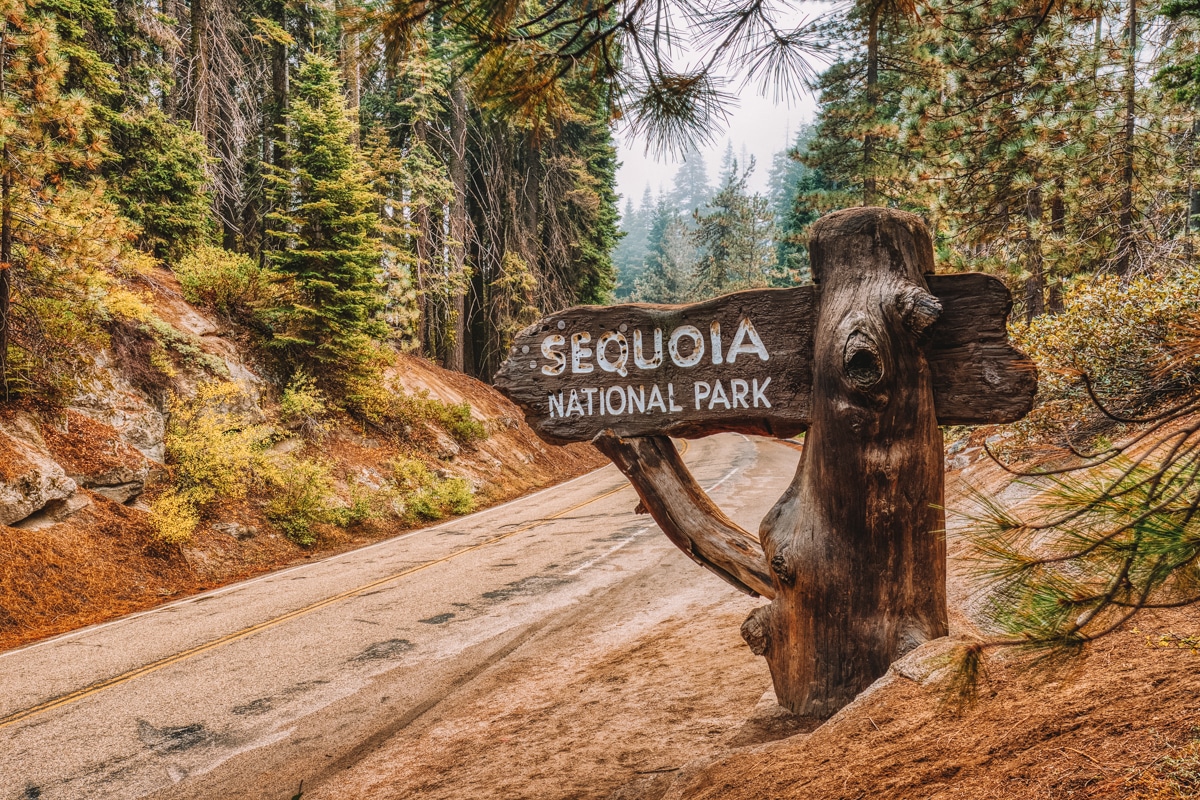
If you’re camping during the non-quota season, you can camp for free in Sequoia National Park in the backcountry once you self-register.
The non-quota season is typically mid-September through the end of May.
During the quota season (end of May to mid-September), you’ll have to reserve your backcountry permit online through recreation.gov and there’s a small fee attached ($15/permit plus $5/person).
Read more about wilderness permits in Sequoia National Park and where to find a Wilderness Office in Sequoia.
The Wilderness Office is the place where you can pick up your permit in person, rent a bear canister (usually), or just get more wilderness-specific information.
If you’re looking to camp outside the park for free, there are some good options as well. You can also check freecampsites.net to find free camping in nearby spots like Sequoia National Forest.
Campgrounds Near Sequoia National Park: Best Camping Outside the Park
Kings Canyon National Park
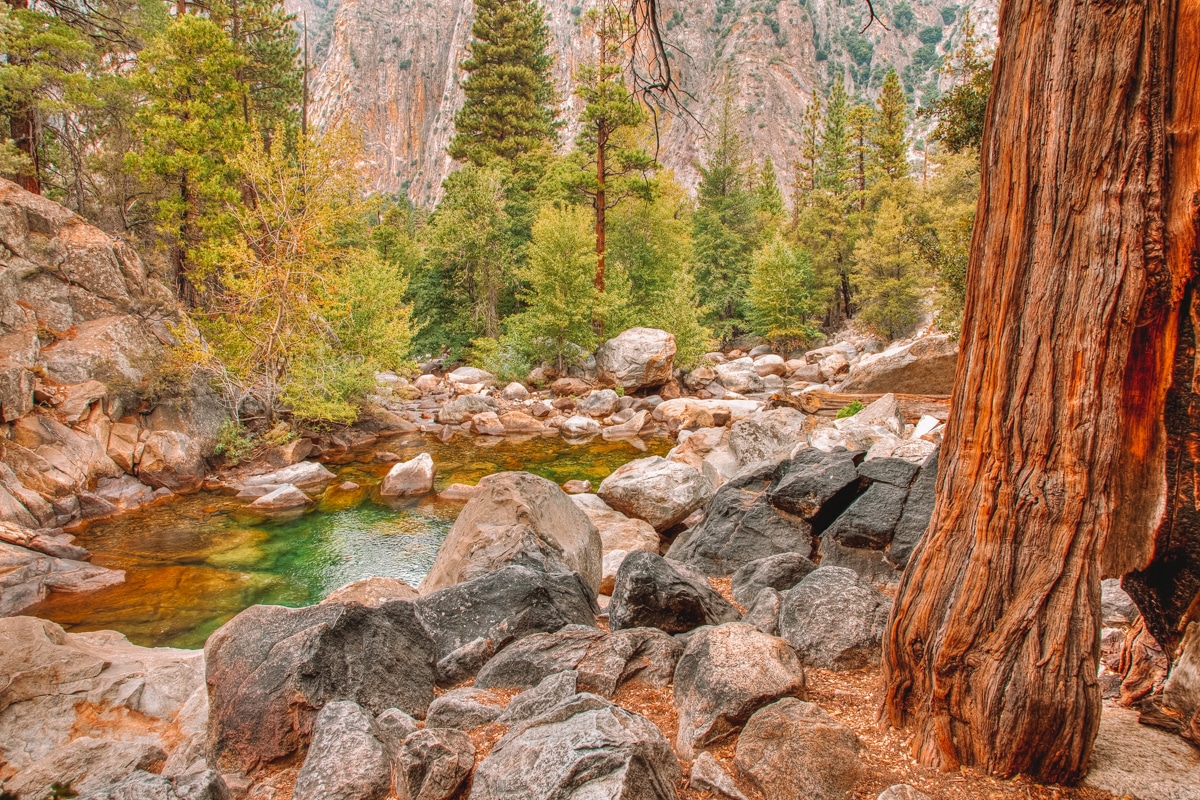
Kings Canyon National Park is directly adjacent to Sequoia National Park, but they’re technically different parks.
With that said, you’ll often see campgrounds on recreation.gov listed under “Sequoia-Kings Canyon” because they’re administered together.
Kings Canyon National Park has two main districts with several campgrounds in each one. Kings Canyon camping is just as popular as camping in Sequoia and the sites are reservable on recreation.gov.
Here are a few camping spots I’d recommend.
Grant Grove Village
If you picture the whole of Sequoia and Kings Canyon National Parks as your right hand, the Grant Grove Village area would be located on the tip of your thumb.
Here, you’ll find the Grant Grove Visitor Center, three campgrounds, and lots of nearby trails, including a hike to the famous General Grant Tree.
Azalea Campground: The Azalea Campground has 110 sites and is open from mid-April to early November.
Sunset Campground: Sunset Campground has 158 campsites as well as an amphitheater where ranger programs are held.
Crystal Springs Campground: Crystal Springs Campground has 50 sites and is nestled among evergreen trees.
Cedar Grove Village
Cedar Grove Village is located along Highway 180 in the heart of Kings Canyon. The road that leads to this area is only open from late April to mid-November.
The Cedar Grove area of the park is near the Kings River and is near the trailheads for popular hiking destinations like Zumwalt Meadow and Roaring River Falls.
Note that most of the services that are typically open in Cedar Grove are closed this year except for pit toilets.
Canyon View Campground: This campground only offers group campsites. There are 16 sites here that are situated near the South Fork of the Kings River and which offer great views of the surrounding cliffs.
Sentinel Campground: Sentinel Campground offers 82 sites (including RV sites) with flush toilets plus an amphitheater, ice, and firewood sales.
Sheep Creek Campground: Sheep Creek Campground is known as one of the shadier campgrounds in Kings Canyon National Park. This campground has 111 sites with a camp store.
Moraine Campground: Moraine Campground is one of the bigger campgrounds with 121 sites. It has a camp store as well as firewood and ice sales.
Three Rivers, CA/Highway 198
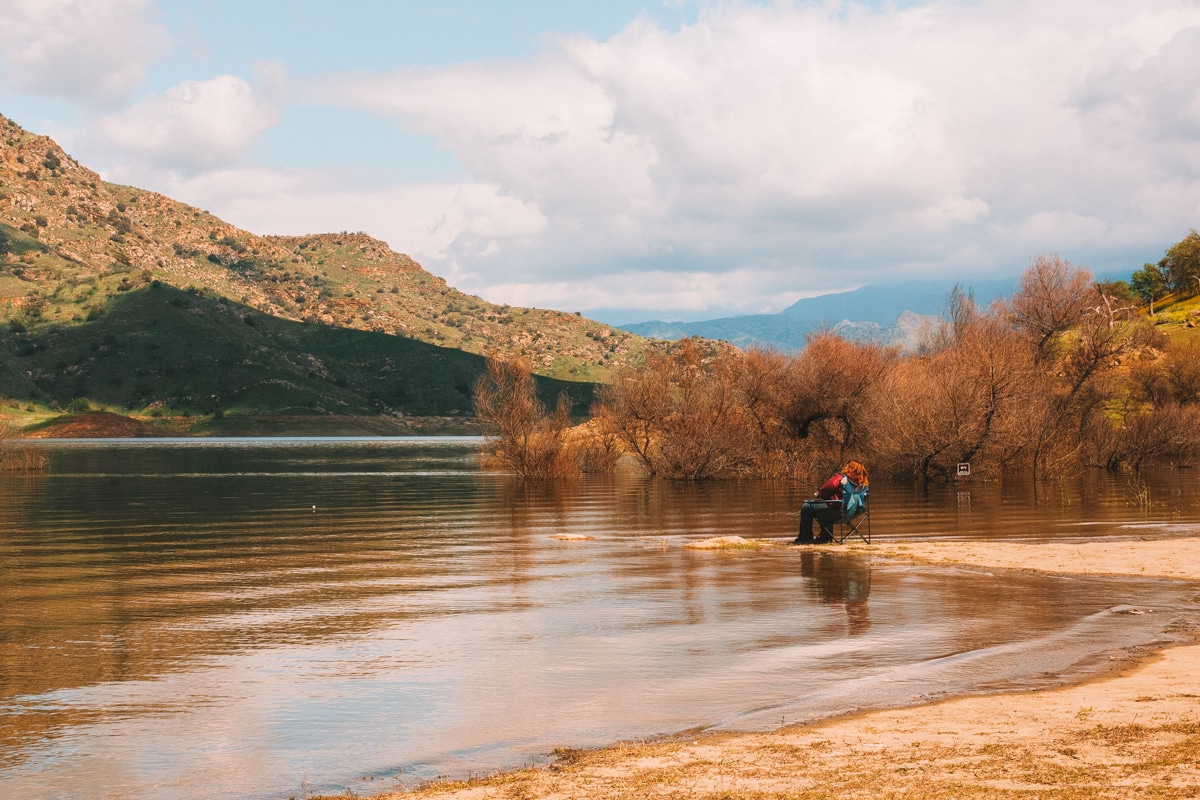
If you’re interested in staying somewhere with cell service, Three Rivers, CA will be one of your closest options.
Sequoia RV Ranch: There aren’t too many RV campsites in either Sequoia or Kings Canyon National Park, so this is a good alternative for RV camping.
Horse Creek Campground: This campground is located in the Horse Creek Recreation Area on the edge of Lake Kaweah.
Sequoia National Forest
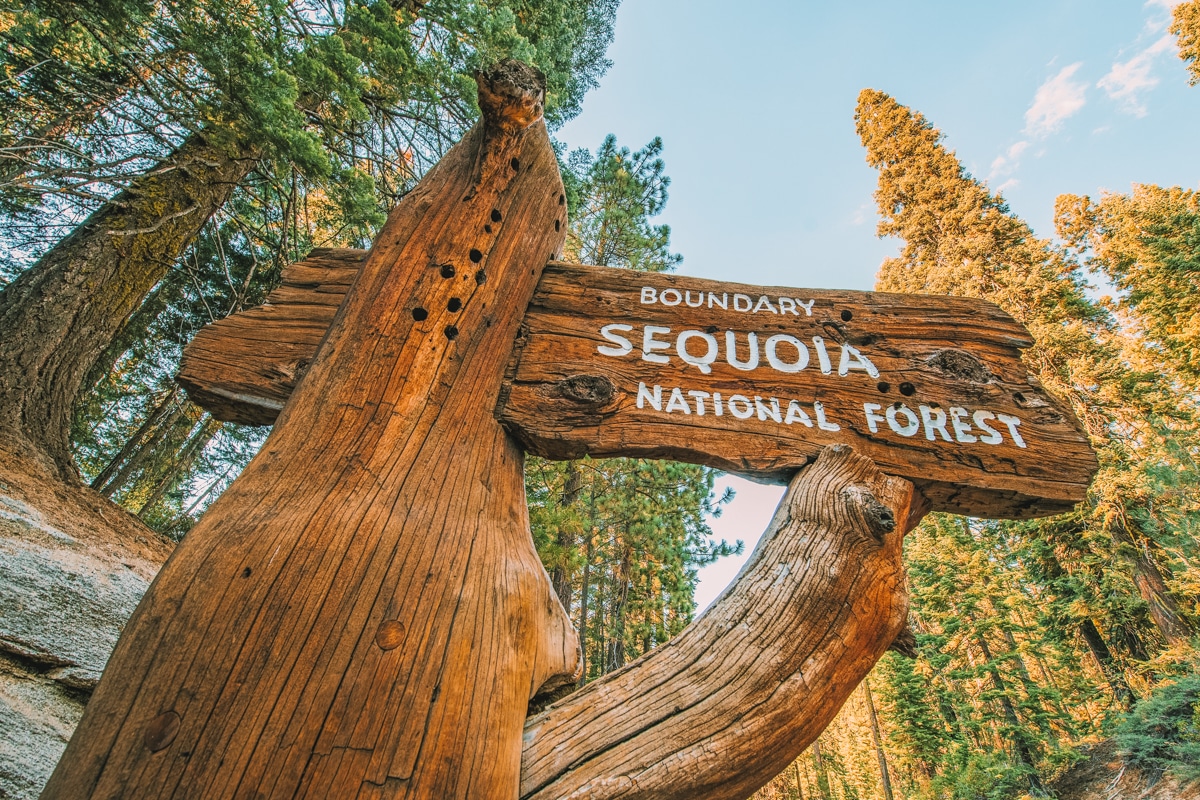
Sequoia National Forest, not to be confused with Sequoia National Park, offers both dispersed camping and traditional campgrounds.
I think some people have the idea that a National Park Service campground is superior. However, I’m here to say that there are thousands of National Forest campgrounds that give the national parks a run for their money.
Upper Stony Creek Campground: Upper Stony Creek Campground is a small campground on the north side of Hume Lake that offers 11 sites.
Princess Campground: The Princess Campground is also in the Hume Lake area and provides a great launching spot to explore General Grant Grove.
Sequoia National Park Camping Tips
Peruse the park website ahead of time
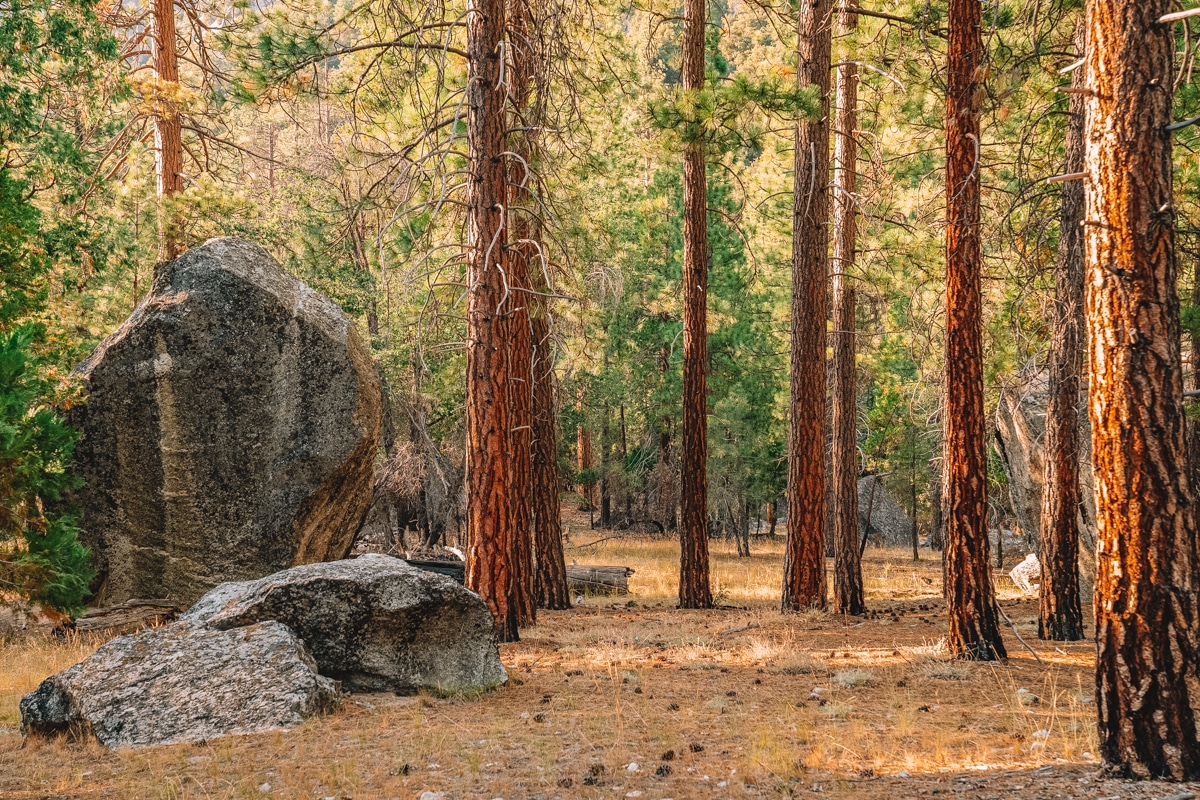
The Sequoia National Park website has tons of very helpful information on how to have a good trip. I strongly encourage people to visit the website before they visit–especially since you won’t have cell service once you’re there.
The ranger at the entrance booth won’t have time to answer your questions and sometimes visitor centers aren’t open very late.
Buy your entrance pass online
If you don’t have an America the Beautiful Pass, you can purchase your entrance pass here.
The entrance stations on the weekends are extremely congested and having your entrance pass ready to go makes everyone’s life easier.
Cell service is extremely limited
Sequoia National Park doesn’t have cell service, but there’s free WiFi at the Foothills Visitor Center and the Kings Canyon Visitor Center. Some of the campgrounds also have pay phones.
There are no RV hookups and limited dump stations
Sequoia National Park RV camping can be a bit of a challenge because many of the campgrounds aren’t set up for RVs.
There are no electrical hookups in any of the campgrounds and the only dump stations are located in Lodgepole Campground, Potwisha Campground, and Dorst Creek Campground (closed in 2022).
Make a plan for your pet
Pets are allowed in Sequoia National Park campgrounds, but they have to be on a leash at all times and they can’t be left unattended.
Pets aren’t allowed on any of the trails in the park, so if you bring your pet, you’ll have to leave someone at the campsite with it.
Understand food storage rules
Sequoia and Kings Canyon National Parks have very strict food storage regulations because they have a thriving population of black bears. It’s critical that you follow these rules to a T, even if they seem ridiculous.
For example, don’t leave your food unattended, even for a minute. Seriously, black bears are super fast. Even in the middle of the day in a busy campground, bears are known to pass through and snag an easy snack.
When black bears get food from campers, it starts a cycle of bad behavior that often ends up with the bear having to be killed.
Best Time to Camp in Sequoia National Park
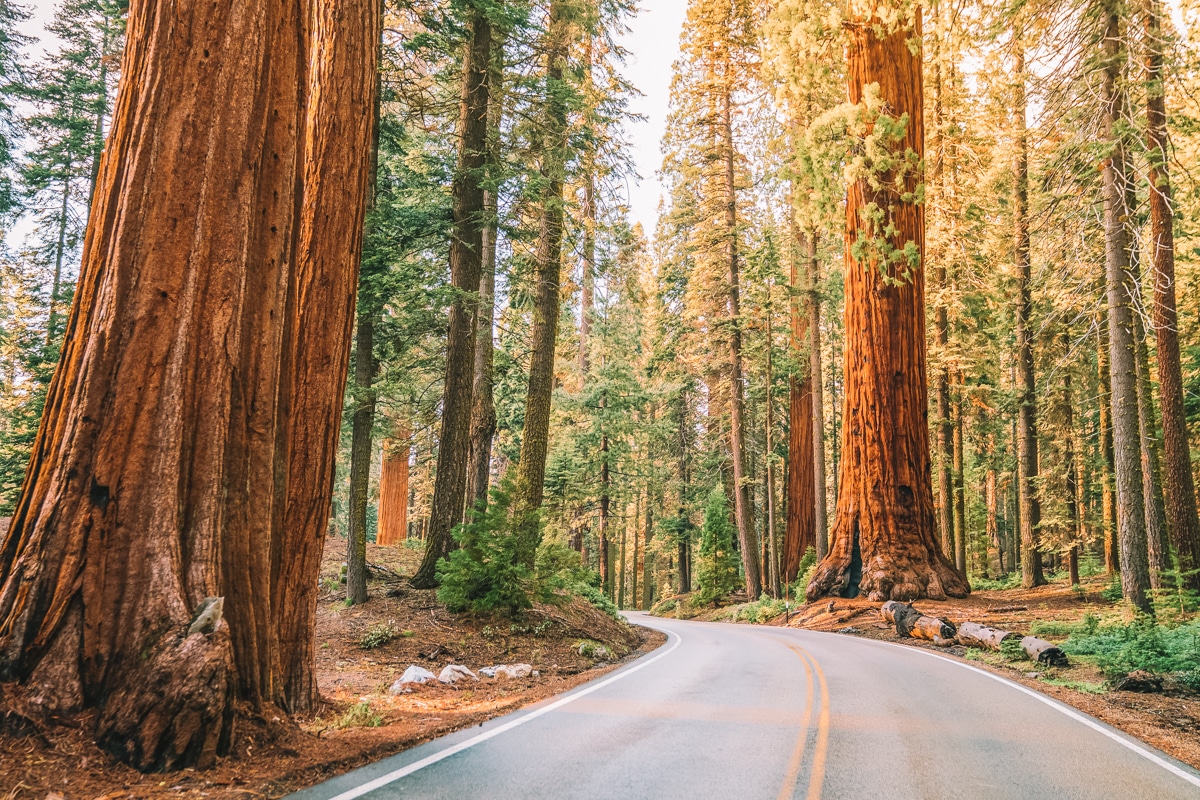
In my mind, Sequoia only has two seasons: Summer (late May-mid September) and Winter (mid-September to mid-May) with little in-between time.
Summer
Summer in Sequoia National Park is when the park roads are open, visitor centers are staffed, and most campgrounds are open.
This is my favorite time to camp in the Sierra Nevada because the temperatures are more bearable and I enjoy exploring the museums and visitor centers the parks have to offer.
The one con about the Sequoia summer is that it’s the busy season. Late summer is also fire season.
Winter
Winter in Sequoia comes early and stays late due to the high elevation of most of the park. Many park roads and campgrounds shut down around the end of September or early October.
Some of the higher elevation roads close during this time but you can still camp in the Foothills area. The benefit of visiting in the winter is that it will be less busy.
FAQs About Camping Sequoia National Park
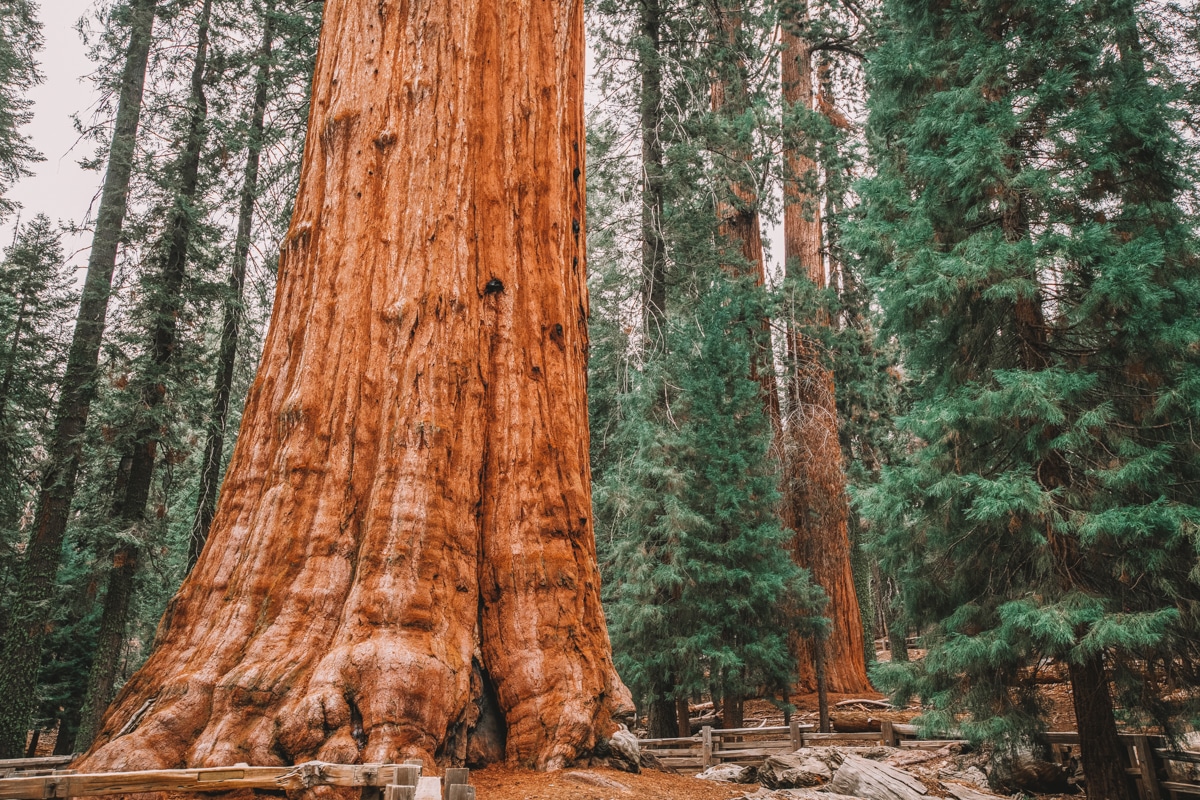
How much does it cost to camp in Sequoia National Park?
Sequoia National Park camping reservations typically run around $22 per night for a single site. Seniors are eligible for $11 sites and the South Fork Campground is only $6 per night.
Can you camp overnight at Sequoia National Park right now (in 2022)?
Yes, most campgrounds in Sequoia National Park are open in 2022, except the Dorst Creek Campground.
You can check out the current and most up-to-date conditions on the Sequoia NPS page to learn specifics for each region in the park.
Can you camp for free in Sequoia National Park?
You can camp for free in Sequoia National Park in the backcountry during the non-quota season, which is between mid-September and late May.
However, you’ll still need to register for a backcountry permit–this can be done at one of the Wilderness Permit Desks.
Can you sleep in your car in Sequoia National Park?
You can sleep in your car in Sequoia National Park at an established campsite. However, you cannot park in parking lots or along the road and sleep in your car.
This style of car camping is called “dispersed camping” and is only allowed in certain places on National Forest or BLM land.
Are there bears in Sequoia National Park? Do I need bear spray?
Yes, there are black bears in Sequoia National Park but it’s illegal to use bear spray in the park. Bear spray is so powerful it’s considered a weapon.
The good news is bear spray is not needed to scare a bear away (trust me, I have lived in the Sierra Nevada a long time. I’ve scared hundreds of bears away simply by yelling and throwing things).
Read more about bear spray in Sequoia and what to do if you see a bear.
Are there rattlesnakes in Sequoia National Park? How about ticks?
Yes, the western rattlesnake lives in Sequoia National Park, particularly the Foothills area. Most bites are the result of people acting disrespectfully around snakes (i.e. intentionally harassing or trying to pick them up).
If you have to walk across a brushy area with tall grass, my recommendation is to wear sturdy boots, take small steps, and stomp as you go.
The vibration in your steps will scare most snakes away or will cause a rattlesnake to rattle, which is its warning sign to you to back away. Read more about reptiles in Sequoia National Park.
There are also ticks in Sequoia National Park, especially in the lower Foothills area. Always do a full body check after you go hiking and learn how to properly remove ticks (hint: don’t burn them off!).
Can you get altitude sickness in Sequoia National Park?
You can most definitely get altitude sickness in Sequoia National Park.
Most people don’t start to experience altitude sickness until they’ve passed the 8,000-foot mark, but several of the campgrounds, especially those in the Mineral King district, are at 7,500 feet.
Do I need a reservation to get into Sequoia National Park?
Many big national parks are starting to require reservations for entrance but there is no reservation needed to get into Sequoia National Park in 2022. However, you do need a reservation to camp in the park.
Can you have a fire in Sequoia National Park?
Whether or not you can have a fire in Sequoia National Park depends on which campground you’re staying in and the season.
Fire restrictions sometimes change from month to month, so it’s best to check the fire restrictions webpage before your visit.
How many days do you need in Sequoia National Park?
In my opinion, you need at least two to three days or more to experience the best of Sequoia National Park.
What to Pack for Camping in Sequoia National Park
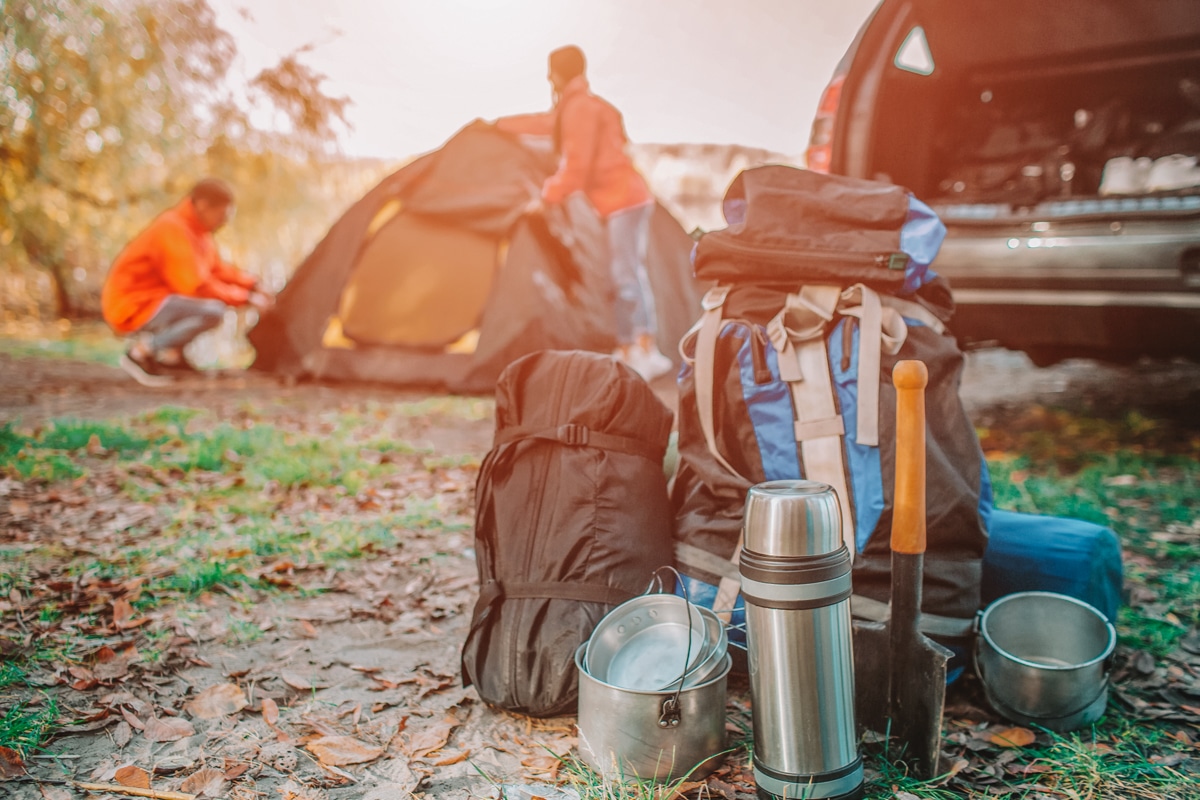
- Tent and sleeping bag: Whether you’re camping in the front or backcountry, these are essentials! If you’re in need of a new tent, read our guides to the best 4-person tents, 6-person tents, 8-person tents, 10-person tents, 12-person tents, large camping tents, 3-room tents, instant tents, pop-up tents, inflatable tents, canvas tents, waterproof tents, insulated tents, winter tents, tunnel tents, and cabin tents.
- Headlamp: You’ll need this at night.
- Jetboil: With fire restrictions common in the park, you’ll want a way to heat your food and water without a campfire.
- Camping mess kit
- Printed or app-based map: You will not be able to use your phone to navigate here unless you have an app that works offline.
- Entrance pass or America the Beautiful Pass: Purchase it online ahead of time to get through the entrance line quicker.
- Bug spray: There are ticks and mosquitos here–be prepared!
- Bear canister: If you’re camping in the backcountry, you’ll need to have one of these or rent one when you get to the park.
- Extra clothing layers: Sequoia is cooler than most people think. Be sure to bring extra layers.
- National Park Passport
ABOUT THE AUTHOR
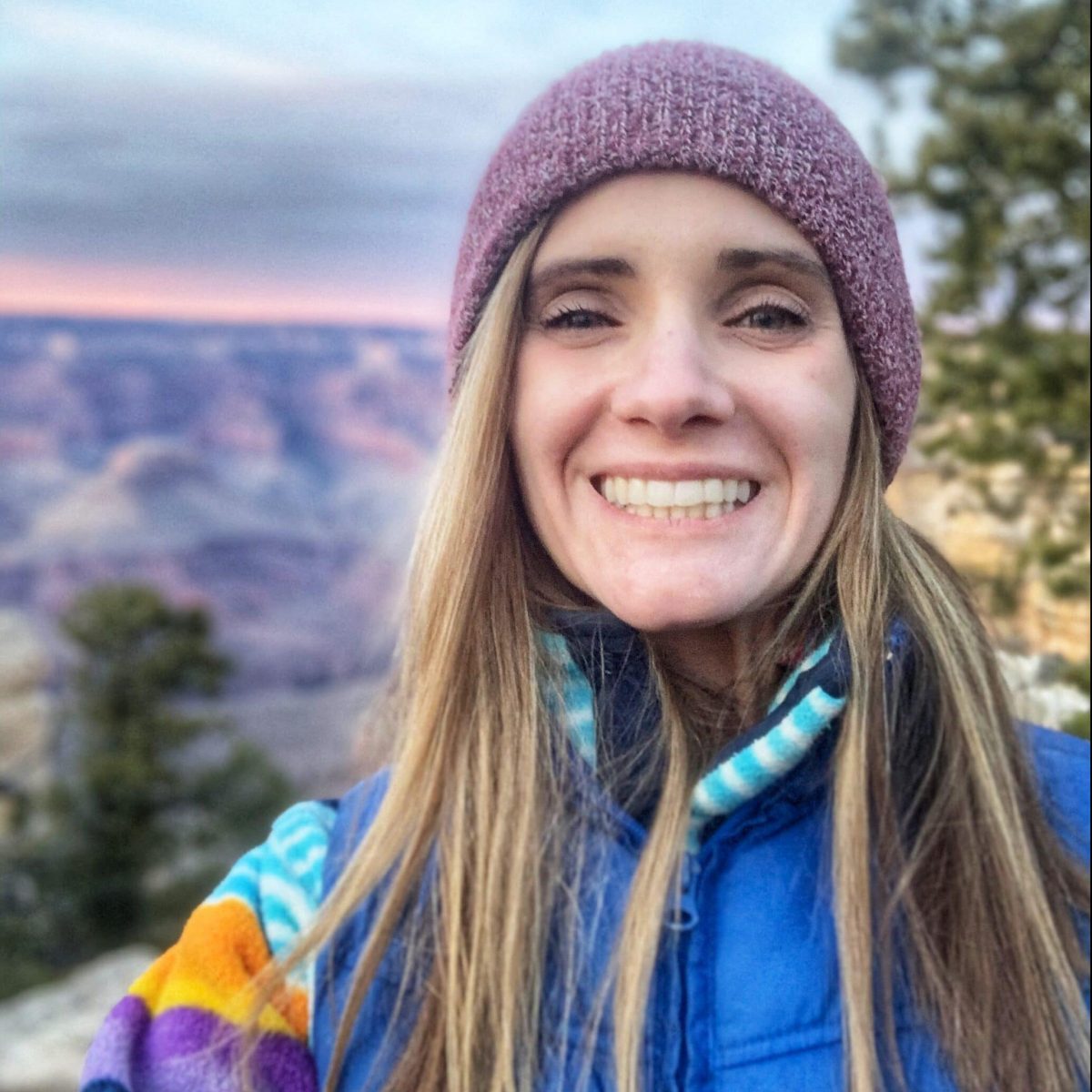
Meredith Dennis
Meredith is a biologist and writer based in California’s Sierra Nevada. She has lived in 6 states as a biologist, so her intel on hiking and camping is *chef’s kiss* next level. One of her earliest camping memories was being too scared to find a bathroom at night on a family camping trip. Thankfully, she’s come a long way since then and she can help you get there too!
Looking for more national park inspiration? Read our related articles below!
Epic California National Parks Road Trip
A Guide to California’s Nine National Parks
Best Things to do in Death Valley National Park
Best Things to do in Joshua Tree National Park
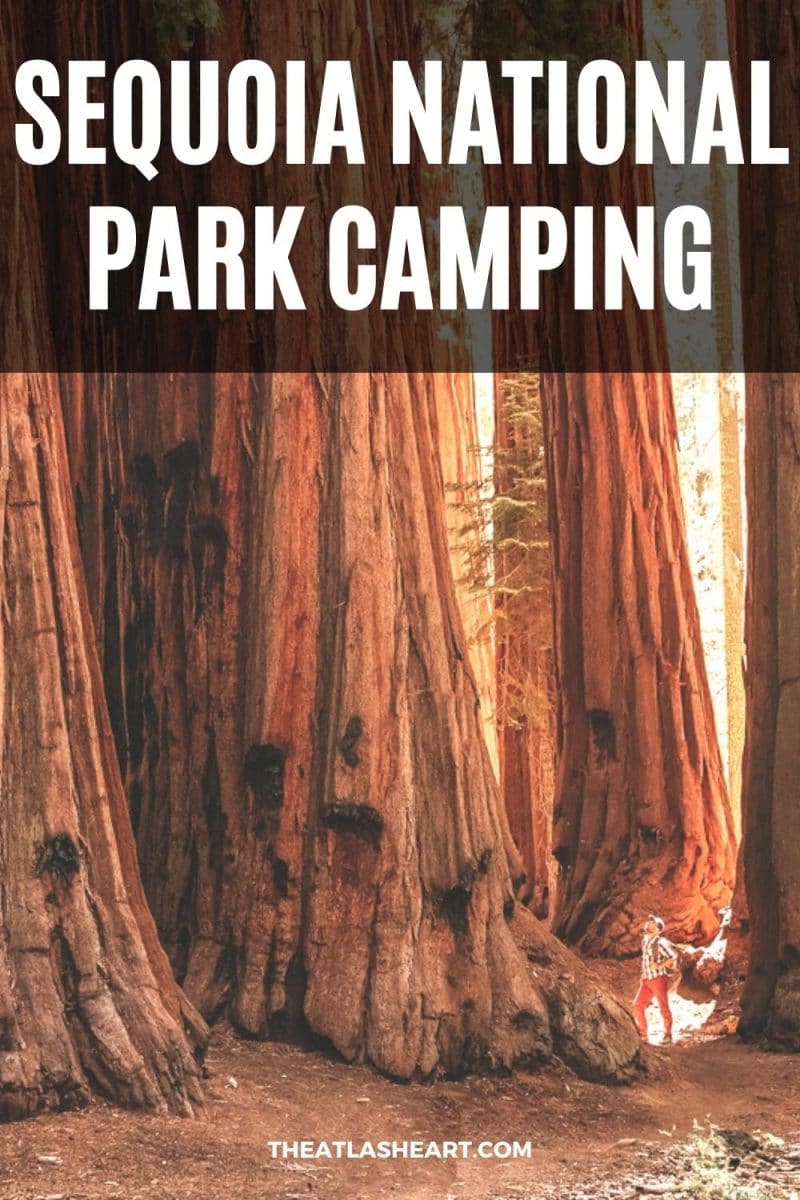
Pin this image for future reference

